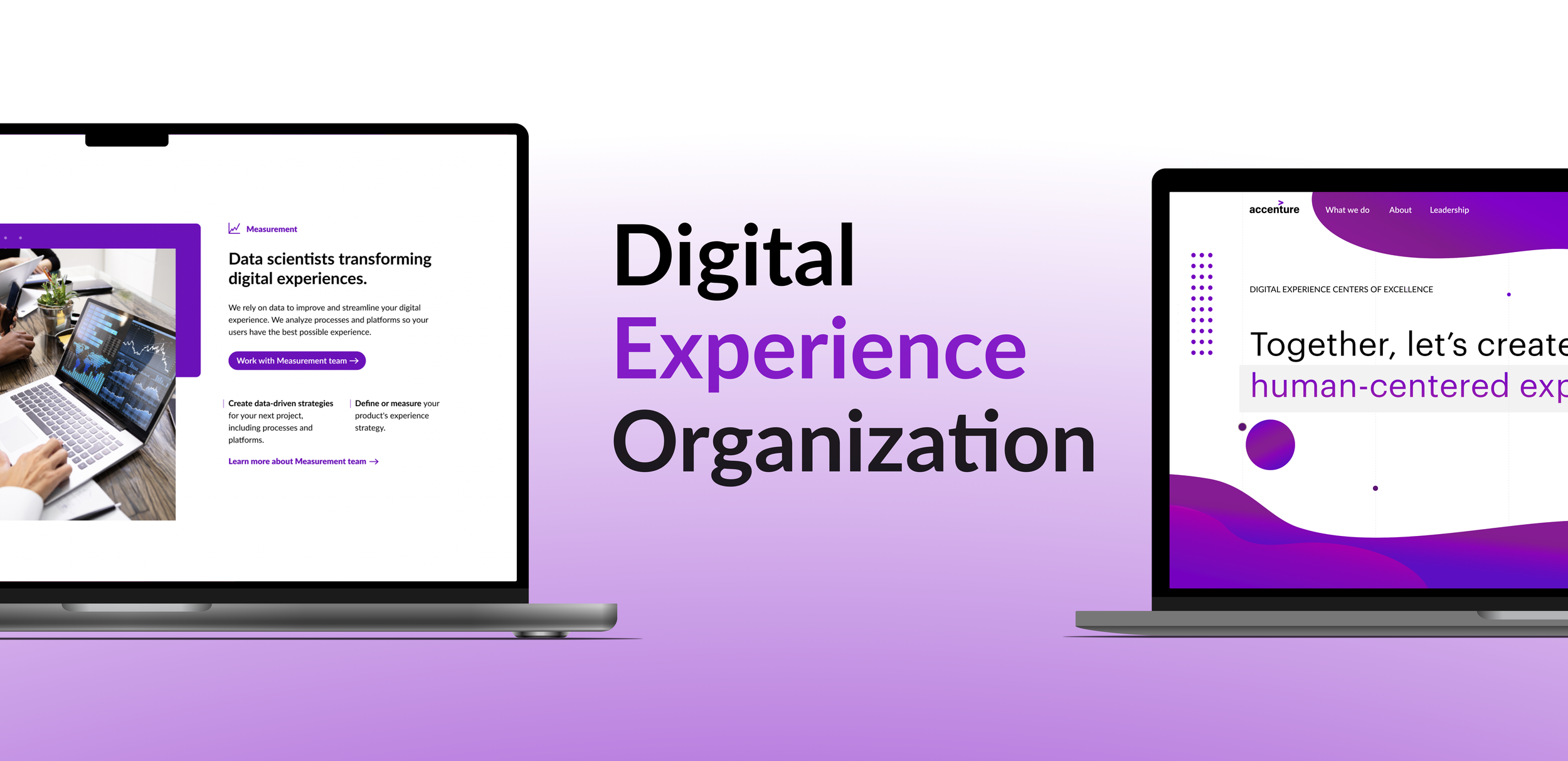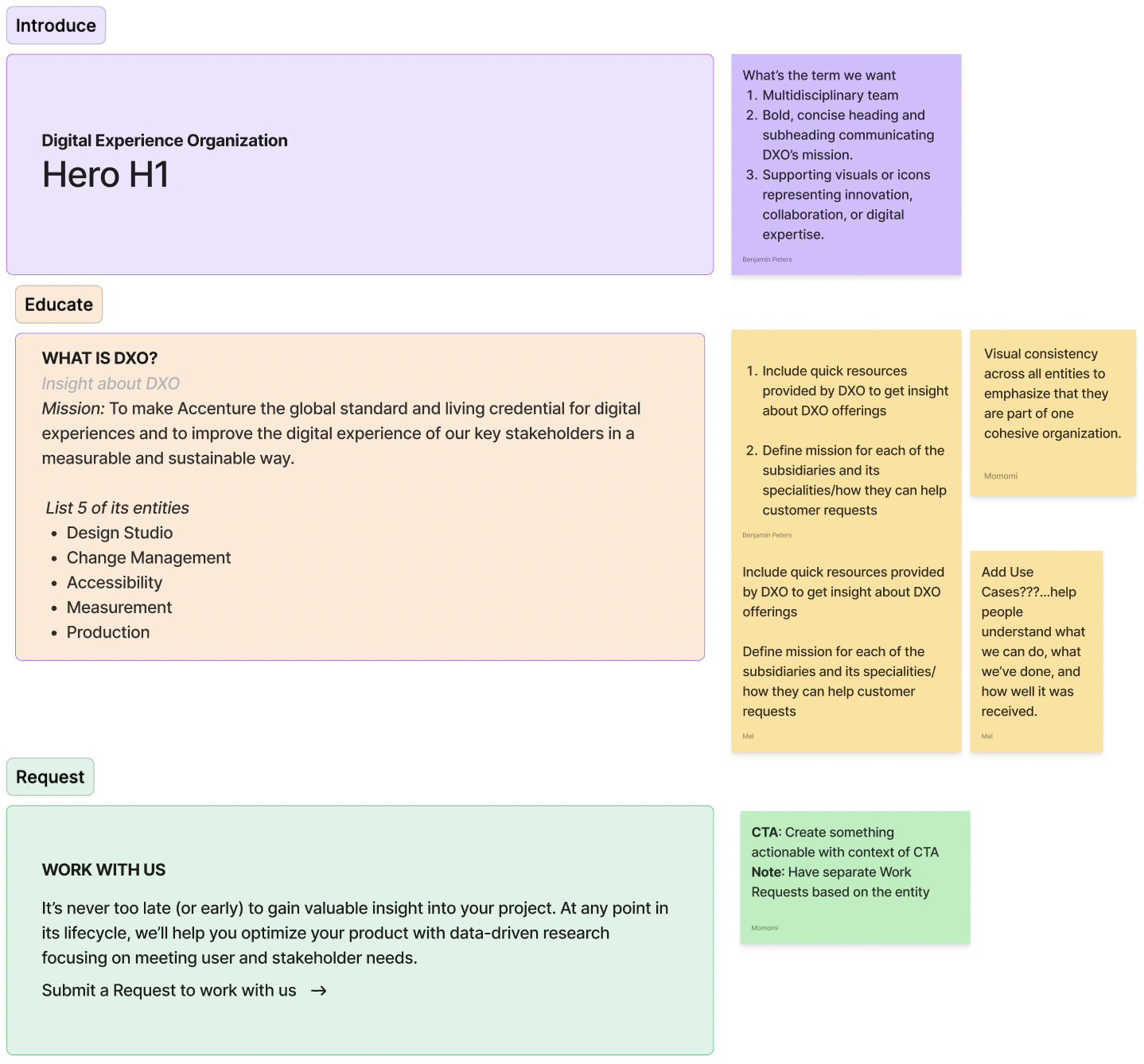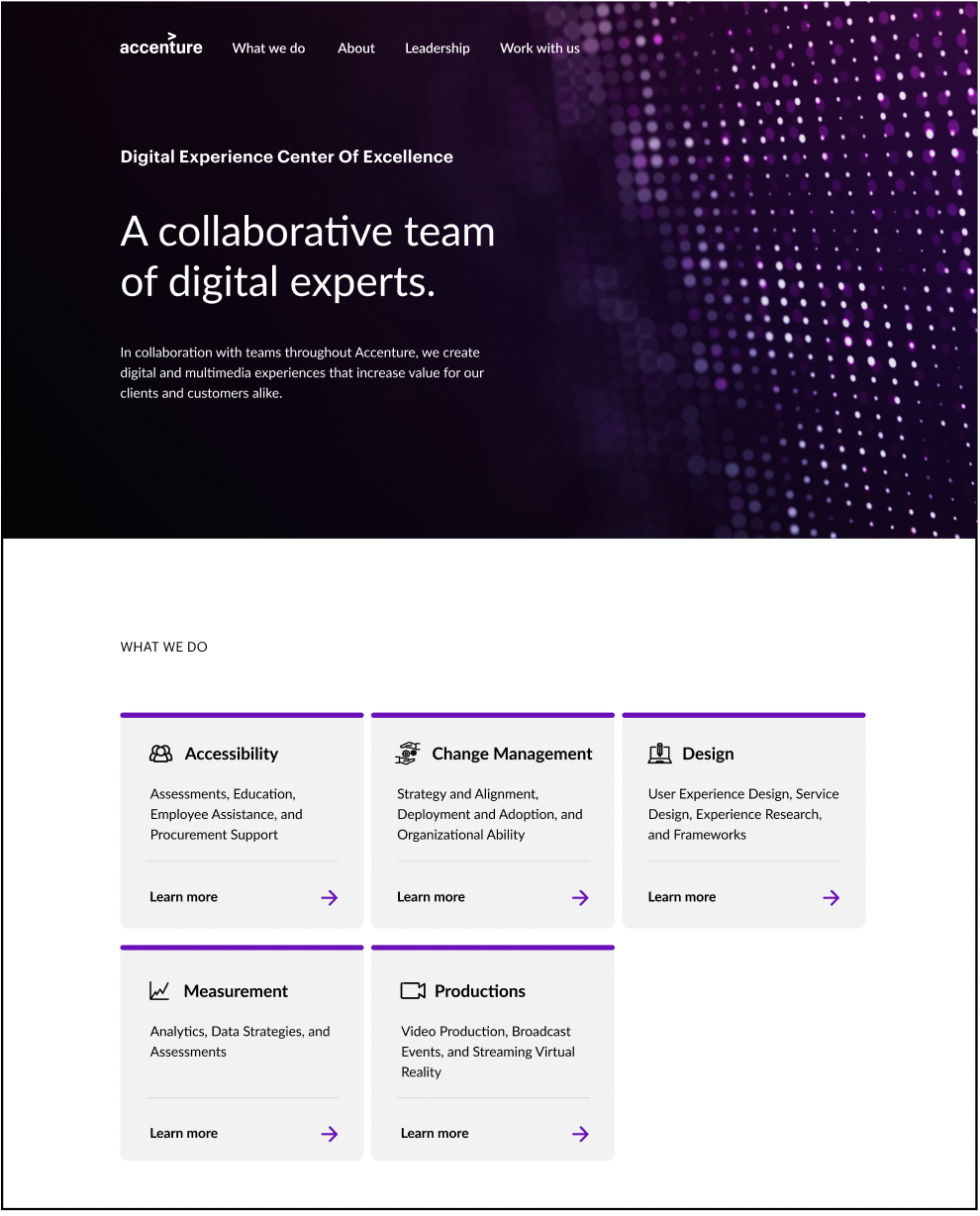Overview
This project aimed to reinforce the identity of the Accenture Digital Experience Organization as a unified entity offering a diverse range of services, rather than a collection of separate teams. The primary goals were to increase project request and establish a cohesive brand for the organization.
Project Timeline 6 months
Role Product Designer
Tools Figma
Current Experience
The only way for customers to request support from DXO’s subsidiaries is by directly emailing the project lead of the relevant team. However, due to the high volume of incoming requests, many of these email responses are either delayed or go unanswered entirely. Additionally, the process of clarifying project needs often requires multiple back-and-forth email exchanges, making the request process tedious and inefficient.
This fragmented and manual approach significantly slows down response times and frustrates potential clients. As a result, many clients abandon their requests altogether, leading to missed opportunities and a decline in project conversion rates. The lack of a streamlined intake system not only impacts customer satisfaction but also limits DXO’s ability to scale and operate efficiently.
Research
A conducted research of clients that previously worked with at least one DXO subsidiary revealed that only 22% were aware the subsidiary teams they worked with is part of DXO. Most were also unaware that DXO offered additional services beyond the subsidiary they worked with. Analysis of customer email requests to DXO project leads also showed a significant drop-off rate of X% during the manual request process due to delays and back-and-forth communication.
This presents a strong opportunity to implement a centralized request system that not only streamlines the intake process but also reinforces the unified identity of DXO, showcasing the full range of services offered across all five subsidiaries
The Goal
To create a website for DXO that clearly showcases each of its subsidiaries as a recognizable, promising team that customers feel confident request service from.
Design Objectives
Define a vision for DXO that aligns with all five subsidiaries.
Design a cohesive website that showcases DXO’s full range of services and a centralized request system while reinforcing trust, brand recognition, and organizational cohesion.
I began the initial layout planning for the DXO website by incorporating feedback from our UX researchers and content writers to identify the key information for the website. The website is structured around three main components: Introduce, Educate, and Request. The page introduces DXO with a brief headline that highlights its goal and purpose. Then there will be a section educating customers on DXO’s work and showcases the five specialized teams that make up the organization. Once customers have a clear understanding of DXO’s capabilities, they are guided to a streamlined, centralized system where they can easily submit a request to engage with DXO services.
Design Exploration
MVP Testing
After several tests conducted for about a week, we observed low engagement with the ‘Request Services’ CTA on the landing page. We developed the following hypotheses to explain the low engagement:
The landing page provides limited information about DXO’s services and lacks a clear call to action. Instead, users must click on each service from the landing page to view its details.
They’re looking for quick access to request service if they already know which team they want to work with.
Final Design
Our findings helped us design a website where clients can dive deeper into DXO’s offerings and navigate to a centralized request form.





